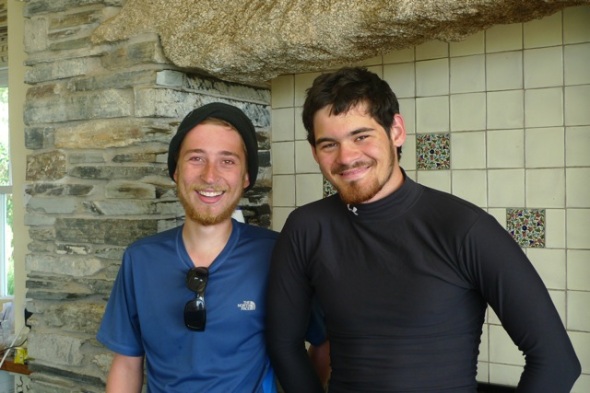In total, we spent 20 days on the Camino, Starting in Toulouse, going all the way to Santiago de Compostella.
What did we think of the Camino? Well, first a bit about the Camino. The Camino is a network of walking paths that forms a web across Europe, all centered around the city of Santiago de Compostella, in North-West Spain. Santiago is supposedly the burying place of the Apostle, James, who is also patron saint of Spain. The paths follow ancient catholic pilgrimage routes that were very popular in the middle ages. In the 12th centure, 500,000 people walked the pilgrimage, from thousands of miles away. Nowadays, the pilgrimage is regaining it’s popularity (200,000 people per year) but has been largely rebranded as a secular, cultural pilgrimage route. We didn’t do it for religious reasons, we did it because it was there to be done.
There are certain things about the route that are very nice. It links together hundreds of medieval churches, cathedrals, cities, towns and villages, and, especially in Spain, is very well set up for pilgrims (in terms of signposting, food, water, and cheap accommodation). We of course, were on bicycles, and while it is possible to cycle the actual walkers’ route, you need a mountain bike. So we were only very rarely on the actual “Camino,” but rather following roads that went through every camino town, and passed by every church. Because this route has been so popular for so long, there were plenty of roads going in the right directions. It was rare that we were more than about 500m from the walking path.
Our impression of the walker’s camino was that it was incredibly crowded. From about 7:00 AM to 3:00 PM here was a constant stream of walkers. The time we were on the camino was the busiest time of year, as the late spring weather was about as good as it gets. If we had been walking, I think the over-crowdedness would have really gotten to us. As it was, we spent every night in busy hostels. This meant we met a lot of nice people, but made sleeping in dormitories noisy and cramped.
The other impression we had of camino walkers, whose average age is probably 40-something, is that they carried far too much stuff. They weren’t carrying tents or cooking gear, and if they brought sleeping bags, they were only needed for hostels without blankets, so didn’t need to be particularly warm. But we saw people with 50, 60, even 70 liter backpacks, and some of the people we talked to had 11 to 13 kilo base pack weights. Our base pack weights were exactly 8 kilos, and that included tents, warm sleeping bags, pads, cooking equipment etc, none of which they had, so we really wondered what they could possibly be carrying. Sometimes we got little clues while sharing dormitories with such over-burdened people. We saw toiletries bags the size of our tent, people with three pairs of shoes (heavy hiking boots, needed only because their packs weighed so much, running shoes, and sandals), three separate sets of cotton (ie after-hiking) clothing, even an electric hairdryer! We hypothesized that it would be relatively easy to walk the camino with a 2 kilo base pack weight!
Now you might say, that people are entitled to be comfortable and if they need to carry all that extra stuff to be comfortable, then they should. But actually, many of them suffered because of their luxury items. As we got closer and closer to Santiago, we saw more and more people with gargantuan packs, limping. Why were they limping? Injuries caused by lugging all of their luxury items! We also saw, every night, people popping blisters on their feet. Big, stiff boots give you blisters, lightweight trail running shoes like we were wearing don’t, but the people needed heavy boots to deal with heavy packs. Its a giant spiral, a few heavy items mean that everything else needs to be heavier too.
We enjoyed our experience on the camino. It was a relaxed part of the trip, as accommodation was always available, the route was already planned, and it was easy to do on a budget. It was also nice to have a destination ahead of us, unlike our experience in France, where we rarely knew where we would be heading in two days’ time. Our main criticism of the camino was how crowded it was, followed by the fact that because it was such a popular route, we were forced to spend more time on larger, busier roads than we did in France.





